
HOME
INTRO
SYMBOLS
ALMANAC
ECONOMY
GEOGRAPHY
STATE MAPS
PEOPLE
FORUM
NEWS
COOL SCHOOLS
STATE QUIZ
STATE LINKS
BOOK STORE
MARKETPLACE
GUESTBOOK
CONTACT US


You may double left-click on a word on this page to retrieve its definition. Tweet Follow
Florida State Wildflower
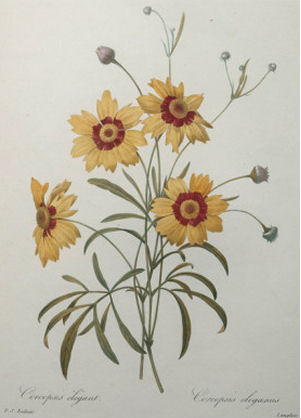
Florida State Wildflower: Coreopsis, spp.
Photographs, prints, posters
Adoption of an official state wildflower seems to be intertwined with Florida's highway beautification program and the approval of a state wildflower license plate to help fund the program.
On March 5, 1991, Representative Richard Graham introduced House Bill No. 1085 in the Florida House of Representatives Proposing Coreopsis, spp. as the state's official wildflower, it was referred to the House Committee on Agriculture. Its time in the House was short-lived and, on March 28 with virtually no debate, HB1085 was approved by the full body with a vote of 103-13.
Actually, an amendment to the bill was proposed that would have made "Dan" the "State Barbecue Man" and "Jake" the "State Bartender."
Amendment 1-On page 1, line 15, after the period insert: Dan is hereby designated as the "State Barbecue Man" and Jake is hereby designated as the "State Bartender."
(93rd Regular Session 1991 281)
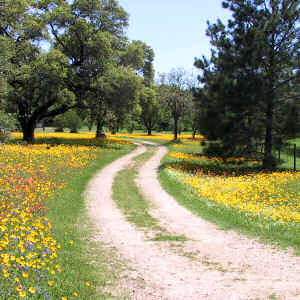
Florida State Wildflower: Coreopsis, spp.
Photographs, prints, posters
Perhaps it goes without saying that this amendment was not allowed as it was deemed " that the amendment unduly expanded the purpose of the bill." The identity of Dan and Jake are unknown to us at this time.
The Senate followed the House lead and voted, on April 2, 1991, to approve House Bill 1085 designating Coreopsis, spp. the official wildflower of Florida. The vote was unanimous and Dan the barbecue man and Jake the bartender were nowhere to be found.
Approved by the Florida House of Representatives and the Florida Senate, only a signature by Governor Lawton Chiles was needed for House Bill No. 1085 to become law.
In Florida, the governor has three options upon receipt of a legislative bill. He/she may sign the bill. He/she may veto (refuse to approve) the bill. He/she may allow the bill to become law without his/her signature.
When a state symbol is designated by a legislative bill, we record the activity date of the governor's office as the "Adoption" date.
At this time, we know that Gov. Chiles did not veto House Bill No. 1085. We do not know if Gov. Chiles signed the bill or whether it became law without his signature. This is why our "Adoption" date above is questioned. As soon as we verify his action, we will update this page.
The ubiquitous flower, commonly known as the tickseed, gained its new status after garden club representatives and others interested in highway beautification approached state Rep. Richard Graham, R-Ormond Beach.
Graham said he sponsored the bill because Florida was one of the few states without a state wildflower, and the coreopsis seemed like a good choice because it grows in every county.
"It's non-toxic, non-invasive. It is gorgeous," Graham said, adding that the flower is sometimes called "paths of sunshine."
(Modest Wildflower Earns Lofty State Status 1991)
Florida's wildflower license plate
A story regarding the origination of Florida's highway beautification program goes back to 1963 with the purchase of sod.
It's said that a contractor purchased sod from a farmer to use in a highway project near Tallahassee. It seems that the sod was harvested from a pasture that had been over seeded with crimson clover in previous years. The clover was planted as winter forage for cattle.
In the spring of 1963, the sod produced a heavy crop of beautiful red clover blossoms along the roadside. Noticed by passing motorists, the Florida Department of Transportation (DOT) was inundated with complementary phone calls.
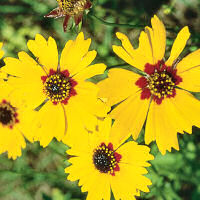
Florida State Wildflower: Coreopsis
Courtesy: Fla. Department of State
The phone calls sent a message and the Florida DOT embarked on efforts to beautify Florida's highways with natural wildflowers.
Some research was done to determine the most appropriate procedures and candidates to use along the states highways but it was kind of hit or miss until the DOT teamed up with the Florida Federation of Garden Clubs, Inc. With the support of the Florida Federation of Garden Clubs, the Department of Transportation funded a research project with Florida Atlantic University. This research project produced recommendations for the most promising wildflowers to use in the DOT's wildflower program.
Varieties of Coreopsis, of which about a dozen are native to Florida, were among the flowers recommended for the wildflower program. Colors range from yellow to pink.
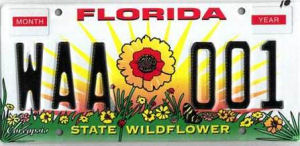
Florida Wildflower License Plate
Inspired in part by Florida's highway beautification program where Coreopsis was widely used for roadside plantings, the Florida Federation of Garden Clubs set about promoting adoption of an official state wildflower.
In 1991, the Coreopsis, some varieties referred to as tickseed, was adopted as Florida's official state wildflower. Nothing conveys the image of the Sunshine State better than a golden spray of Coreopsis spread across the landscape.
In 1991, House Bill No. 1909 was approved. It specified that the Department of Motor Vehicles would create a specialty license plate honoring the state wildflower. Regarding the wildflower license plate, section 320.08058 Specialty license plates.— of the Florida Statutes reads
(27) FLORIDA WILDFLOWER LICENSE PLATES.--
(a) The department shall develop a Florida Wildflower license plate as provided in this section. The word “Florida” must appear at the top of the plate, and the words “State Wildflower” and “coreopsis” must appear at the bottom of the plate.
(b) The annual use fees shall be distributed to the Florida Wildflower Foundation, Inc., a nonprofit corporation under s. 501(c)(3) of the Internal Revenue Code. The proceeds must be used to establish native Florida wildflower research programs, wildflower educational programs, and wildflower grant programs to municipal, county, and community-based groups in this state.
1. The Florida Wildflower Foundation, Inc., shall develop procedures of operation, research contracts, education and marketing programs, and wildflower planting grants for Florida native wildflowers, plants, and grasses.
2. A maximum of 15 percent of the proceeds from the sale of such plates may be used for administrative and marketing costs.
3. If the Florida Wildflower Foundation, Inc., ceases to be an active nonprofit corporation under s. 501(c)(3) of the Internal Revenue Code, the proceeds from the annual use fee shall be deposited into the General Inspection Trust Fund created within the Department of Agriculture and Consumer Services. Any funds held by the Florida Wildflower Foundation, Inc., must be promptly transferred to the General Inspection Trust Fund. The Department of Agriculture and Consumer Services shall use and administer the proceeds from the use fee in the manner specified in this paragraph.
Prior to addition of an official wildflower, the State of Florida adopted an official state flower in 1909.
Florida Law
The following information is excerpted from the Florida Statutes, Title 4, Chapter 15, Section 15.0345 .
TITLE IV - EXECUTIVE BRANCH
CHAPTER 15. SECRETARY OF STATE
SECTION 15.0345
15.0345 Official state wildflower. --The Coreopsis is hereby designated and declared the official Florida state wildflower, as species of this genus are found throughout the state and are used extensively in roadside plantings and highway beautification.
History.--s. 1, ch. 91-10.
Sources...
"93rd Regular Session." Journal of the House of Representatives (1991): 51. Web.
"93rd Regular Session." Journal of the House of Representatives<(1991): 261. Web.
"93rd Regular Session." Journal of the House of Representatives (1991): 281. Web.
"93rd Regular Session." Journal of the Senate (1991): 214. Web.
"93rd Regular Session." Journal of the Senate (1991): 234. Web.
"Coreopsis - State Wildflower History." Florida Wild Flower Council. Florida Wild Flower Council. Web. 27 Sept. 2005.
"Legislators Want Tickseed Named Official Wildflower." Orlando Sentinel. Orlando Sentinel, 3 Apr. 1991. Web. 19 Mar. 2016.
"Modest Wildflower Earns Lofty State Status." Orlando Sentinel. Orlando Sentinel, 19 Oct. 1991. Web. 19 Mar. 2016.
Shearer, Benjamin F. and Barbara S. State Names, Seals, Flags and Symbols: A Historical Guide Third Edition, Revised and Expanded. Westport, Conn: Greenwood Press, 3 Sub edition, 2001.
"The 2014 Florida Statutes." Online Sunshine. The Florida Legislature. Web. 26 Apr. 2015.
Additional Information
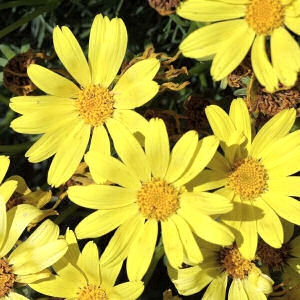
Florida State Wildflower: Coreopsis, spp.
Photographs, prints, posters
Coreopsis: A Guide To Identifying and Enjoying Florida's State Wildflower :
Archived by the University of Florida: Institute of Food and Agricultural Sciences.
:
Archived by the University of Florida: Institute of Food and Agricultural Sciences.
Coreopsis: National Gardening Association: Plant Care Guides.
Coreopsis: Terra Nova Nurseries, Canby, Oregon.
Plant Profile for Coreopsis L. (Tickseed): USDA, NRCS. 2004. The PLANTS Database, Version 3.5 (http://plants.usda.gov). National Plant Data Center, Baton Rouge, LA 70874-4490 USA.
Coreopsis L.: Integrated Taxonomic Information System (ITIS) Here you will find authoritative taxonomic information on plants, animals, fungi, and microbes of North America and the world.
Florida Wildflower Foundation: Web site of the Florida Wildflower Foundation. The mission of the Florida Wildflower Foundation is to enrich lives with Florida native wildflowers through education, planting and research projects.
Florida Federation of Garden Clubs: FFGC activities, scholarships, youth programs, floral design courses, arrangements, educational opportunities, tours, shows and special events of the various affiliated garden clubs in the state of Florida.
Lady Bird Johnson Wildflower Center: Website of the Lady Bird Johnson Wildflower Center, University of Texas, Austin.
State wildflowers: Complete list of official state wildflowers from NETSTATE.COM
More symbols & emblems: Complete list of official Florida state symbols from NETSTATE.COM.

Florida Wildflowers
Walter Kingsley Taylor
Florida Wildflowers: A Comprehensive Guide, Walter Kingsley Taylor. 576 pages. Publisher: University Press of Florida; COM edition (April 16, 2013)
Walter Kingsley Taylor's Florida Wildflowers in their Natural Communities was wildly praised for its beauty, ease of use, and unique organizational structure: plants were described in the context of where they grow, making identification much simpler--and more rewarding--for the casual hiker or wildflower enthusiast.
Vastly expanded and updated with new taxonomy, this new book provides detailed information on more than 450 species included in the earlier edition and nearly doubles the number of species included by expanding coverage into wetlands.
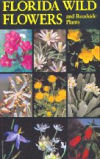
Florida Wild Flowers
and Roadside Plants
C. Ritchie Bell, Bryan J. Taylor
Florida Wild Flowers and Roadside Plants, by C. Ritchie Bell, Bryan J. Taylor. 332 pages. Publisher: The University of North Carolina Press (December 1, 2006)
Florida Wild Flowers and Roadside Plants is a helpful guide to identifying 500 species of Florida plant life, including rare as well as common wild flowers and characteristic trees, shrubs, vines, and ferns. Each description includes both common and scientific names, a range map, symbols to show the season of bloom, and a useful summary code of nine key plant, leaf, and flower characters, to aid in identification.
With rich color photographs and brief, nontechnical notes to accompany each species, this handbook is a valuable reference for tourists, residents, students, and anyone interested in plants in all seasons of the year, from Pensacola to the Keys.
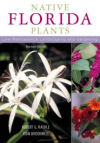
Native Florida Plants
Robert G. Haehle
Native Florida Plants: Low Maintenance Landscaping and Gardening, by Robert G. Haehle. 312 pages. Publisher: Taylor Trade Publishing; Revised Edition edition (February 16, 2004)
Native landscapes are easier to maintain, use less water and thrive without chemical pesticides and fertilizers. Native Florida Plants describes every type of regional flora—-from seaside foliage and wildflowers to grassy meadows, shrubs, vines, and aquatic gardens—-in 301 profiles and accompanying color photographs.
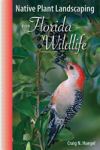
Native Plant Landscaping
for Florida Wildlife
Craig N. Huegel
Native Plant Landscaping for Florida Wildlife, Craig N. Huegel. 312 pages. Publisher: University Press of Florida (October 24, 2010)
Floridians share their state with a wide and unique array of wildlife. Unfortunately, commercially developed subdivisions and landscapes often do not provide welcoming habitats for the majority of the native fauna. Attract wildlife back to your yard with this clear, practical guide.
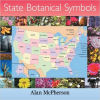
State Botanical Symbols
Alan McPherson
State Botanical Symbols, by Alan McPherson. 132 pages. AuthorHouse (June 10, 2013)
Alan McPherson is a naturalist who resides in northern Indiana and enjoys traveling and learning about the botanical resources our vast country.
In this reference book over 200 state botanical symbols are presented with informative text that highlights their adoptive legislation, botanical and social history. From the white pine of Maine's northeastern forests, westward to the yellow hibiscus of Hawaii's Polynesian islands, our state's official botanical symbols are as uniquely diverse as the terrain and character of the 50 states themselves.
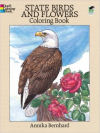
State Birds and Flowers
Coloring Book

U.S. State Flowers
in Counted Cross Stitch
Gerda Bengtsson
State Birds and Flowers Coloring Book
by Annika Bernhard
51 accurately detailed, copyright-free renderings include national bird (eagle) and flower (rose) plus 50 state birds and flowers.
U. S. State Flowers in Cross Stitch
by Gerda Bengtsson - Botanically correct cross stitch designs of state flowers of the 50 States.
Quilting Flowers of the States
by Sue Harvey - A lovely 12-inch flower block for each of the 50 states. Techniques used are piecing, appliqué, paper-piecing and three-dimensional techniques.
Plants, Seeds & Flowers:
Bulbs, seeds, plants, fertilizer, plant containers, garden tools and more.

